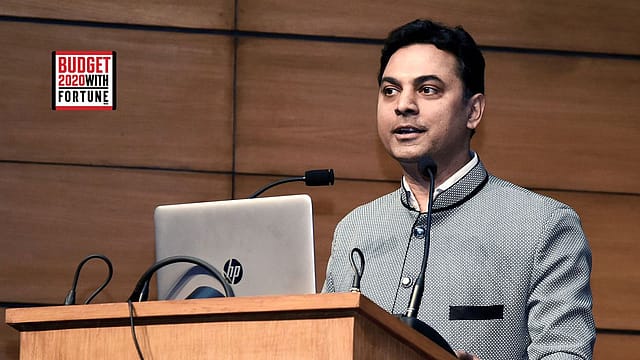India’s economy to grow at 6-6.5% in FY21: Eco Survey
ADVERTISEMENT

The dark clouds hovering over the Indian economy are unlikely to fade away in FY21, says the Economic Survey 2019-20, tabled by finance minister Nirmala Sitharaman in Parliament on Friday. The Survey seems to be in agreement with the First Advance Estimates of National Income by the Central Statistics Office, which estimated India’s gross domestic product (GDP) growth for FY20 at 5%—the worst performance in the past 11 years. As for the next financial year (FY21), the Survey says that India is likely to grow at only 6%-6.5%, but it will need to relax its current fiscal deficit target of 3.3% of the GDP, to revive growth.
The uptick in growth in the second half of the current fiscal to 5% from a low of 4.5% in the second quarter of FY20 is based on 10 factors, including higher foreign direct investment (FDI) flows, a build-up of demand pressure, and positive GST (goods and services tax) revenue growth.
But overall, 2019 has been a rather dismal year for the world, argues the Survey. “The year 2019 was a difficult one for the global economy, with world output estimated to grow at its slowest pace of 2.9% since the global financial crisis of 2009, declining from a subdued 3.6% in 2018 and 3.8% in 2017,’’ says the Survey. Uncertainties, although declining, are still elevated due to protectionist tendencies of China and the U.S. and rising U.S.-Iran geopolitical tensions, the Survey adds.
January 2026
Netflix, which has been in India for a decade, has successfully struck a balance between high-class premium content and pricing that attracts a range of customers. Find out how the U.S. streaming giant evolved in India, plus an exclusive interview with CEO Ted Sarandos. Also read about the Best Investments for 2026, and how rising growth and easing inflation will come in handy for finance minister Nirmala Sitharaman as she prepares Budget 2026.
The Survey noted that the Indian economy slowed, with GDP growth moderating to 4.8% in the first half of FY20 from 6.2% in the second half of FY19, due to a weak environment for global manufacturing, trade and demand.
But there were a number of domestic factors at play, too, to bring down GDP growth. “The financial sector acted as a drag on the realty sector,’’ says the Survey, adding that the “deceleration in GDP growth can be understood within the framework of a slowing cycle of growth.” However, the Survey does not clarify whether the slowing growth was because of structural or cyclical factors.
Most sectors of the economy, too, are not in the pink of health. The agriculture and allied sectors are estimated to grow at 2.8% in FY21, while the growth in the current year is estimated at 2.9%; industrial growth in FY20 is estimated at 2.5%. Similarly, the merchandise exports to GDP ratio declined, resulting in a negative impact on the balance of payment situation.
Yet, there remain a few silver linings, despite the gloom and doom all around. The real consumption growth has recovered in the second quarter of FY20, cushioned by significant growth in the government’s final consumption. The current account deficit has narrowed to 1.5% of the GDP in the first half of FY20 from 2.1% in FY19. Moreover, there have been impressive additions to foreign direct investments, rebounding of portfolio flows, and accretion of foreign exchange reserves.
For instance, India’s balance of payments ( BoP) position has improved from $412.9 billion in the March-end 2019 to $433.7 billion in the end-September 2019; foreign exchange reserves grew to 461.2 billion as of January 10, 2020. It also called for more reforms for making it easier to do business in the country. The Survey observed that there an urgent need to remove the red tape at ports to promote exports, apart from eliminating other business hindrances such as registering property, paying taxes, and enforcing contracts.
Says Niranjan Hiranandani, co-founder and managing director Hirandani group: We welcome the positive outlook of Economic Survey, where India’s economic growth is projected at 6%-6.5% for the next financial year starting April 1, 2020. “However, we strongly advocate that the central government needs to announce bolder policy and fiscal measures to recover from a sharp economic downturn and somnolent market scenario,” he adds.
The annual Economic Survey is prepared by a team headed by the Chief Economic Advisor to the finance minister, Krishnamurthy Subramanian.
